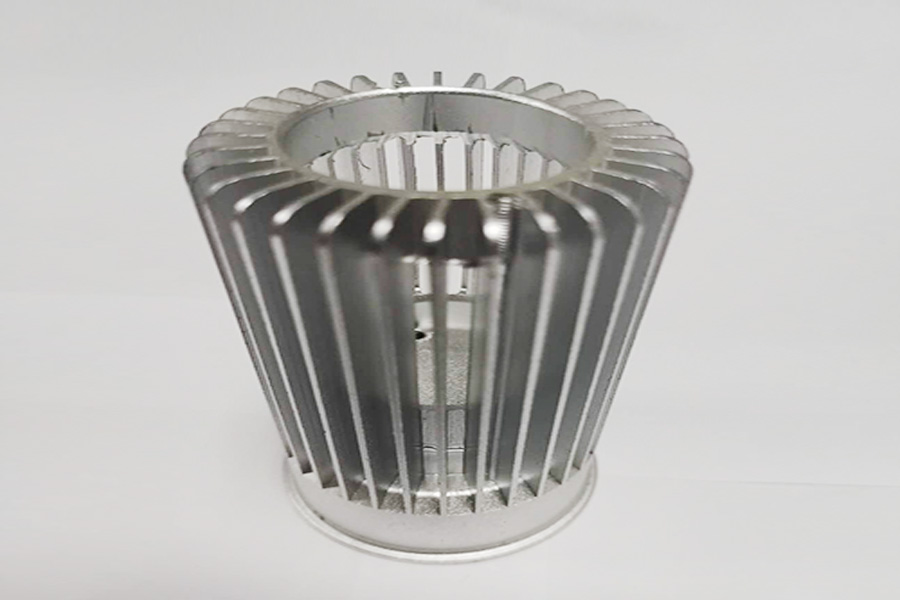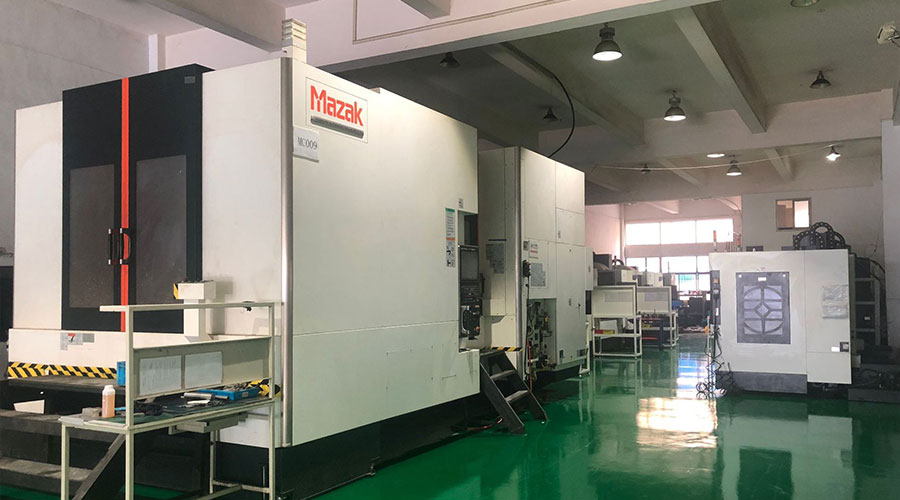In mold manufacturing, we will often hear the words casting and forging. What is the difference between these two manufacturing processes? Now, I will give you a detailed introduction!
1. Casting
Casting is the process of smelting metal into a liquid that meets certain requirements and pouring it into a mold. After cooling, solidification, and cleaning, a casting (part or blank) with a predetermined shape, size and performance is obtained. It is a modern mechanical manufacturing The basic craft of industry.
The cost of the blank produced by casting is low, and it can show its economical efficiency for parts with complex shapes, especially with complicated inner cavities; at the same time, it has a wide range of adaptability and better comprehensive mechanical properties. However, the materials (such as metal, wood, fuel, molding materials, etc.) and equipment (such as metallurgical furnaces, sand mixers, molding machines, core making machines, shakeout machines, shot blasting machines, cast iron plates, etc.) required for casting production are more Many, and will produce dust, harmful gases and noise and pollute the environment.
1. Types of casting
According to the styling method, it is habitually divided into:
①Ordinary sand casting, including three types: green sand, dry sand and chemically hardened sand.
②Special casting, according to the modeling material, can be divided into special casting with natural mineral sand and gravel as the main modeling material (such as investment casting, clay casting, casting workshop shell casting, negative pressure casting, solid casting, ceramic casting) Etc.) and special casting with metal as the main mold material (such as metal mold casting, pressure casting, continuous casting, low pressure casting, centrifugal casting, etc.).

2. Casting process
①Preparation of molds (containers that make liquid metal into solid castings). The molds can be divided into sand, metal, ceramic, clay, graphite, etc. according to the materials used; they can be divided into disposable and semi-permanent types according to the number of uses. And permanent. The pros and cons of mold preparation are the main factors affecting the quality of castings;
②Melting and pouring of cast metals, cast metals (cast alloys) mainly include cast iron, cast steel and cast non-ferrous alloys;
③ Casting processing and inspection. Casting processing includes removal of foreign bodies on the core and surface of castings, removal of pouring risers, shoveling of burrs and drape seams and other protrusions, as well as heat treatment, shaping, anti-rust treatment and rough machining.
2. Forging
Forging is a processing method that uses forging machinery to apply pressure to metal blanks to produce plastic deformation to obtain forgings with certain mechanical properties, certain shapes and sizes, and is one of the two major components of forging.
Through forging, the as-cast looseness and welding holes of the metal can be eliminated, and the mechanical properties of forgings are generally better than those of castings of the same material. For the important parts of machinery with high load and severe working conditions, forgings are mostly used except for simpler shapes that can be rolled, profiles or welded parts.
1. Forging is divided into forming methods
①Open forging (free forging)
Using impact or pressure to deform the metal between the upper and lower iron (anvils) to obtain the required forgings, there are mainly two types of manual forging and mechanical forging.
②Closed mode forging
The metal billet is compressed and deformed in a forging die with a certain shape to obtain forgings, which can be divided into die forging, cold heading, rotary forging, and extrusion.
2. According to deformation temperature
Forging can be divided into hot forging (the processing temperature is higher than the recrystallization temperature of the blank metal), warm forging (below the recrystallization temperature) and cold forging (normal temperature).
Forging materials are mainly carbon steel and alloy steel with various compositions, followed by aluminum, magnesium, titanium, copper, etc. and their alloys. The original state of the material includes bar stock, ingot, metal powder and liquid metal. The ratio of the cross-sectional area of the metal before deformation to the die cross-sectional area after deformation is called the forging ratio. The correct choice of forging ratio has a lot to do with improving product quality and reducing costs.
In mold manufacturing, we will often hear the words casting and forging. What is the difference between these two manufacturing processes? Now, I will give you a detailed introduction!
1. Casting
Casting is the process of smelting metal into a liquid that meets certain requirements and pouring it into a mold. After cooling, solidification, and cleaning, a casting (part or blank) with a predetermined shape, size and performance is obtained. It is a modern mechanical manufacturing The basic craft of industry.
The cost of the blank produced by casting is low, and it can show its economical efficiency for parts with complex shapes, especially with complicated inner cavities; at the same time, it has a wide range of adaptability and better comprehensive mechanical properties. However, the materials (such as metal, wood, fuel, molding materials, etc.) and equipment (such as metallurgical furnaces, sand mixers, molding machines, core making machines, shakeout machines, shot blasting machines, cast iron plates, etc.) required for casting production are more Many, and will produce dust, harmful gases and noise and pollute the environment.
1. Types of casting
According to the styling method, it is habitually divided into:
①Ordinary sand casting, including three types: green sand, dry sand and chemically hardened sand.
②Special casting, according to the modeling material, can be divided into special casting with natural mineral sand and gravel as the main modeling material (such as investment casting, clay casting, casting workshop shell casting, negative pressure casting, solid casting, ceramic casting) Etc.) and special casting with metal as the main mold material (such as metal mold casting, pressure casting, continuous casting, low pressure casting, centrifugal casting, etc.).
2. Casting process
①Preparation of molds (containers that make liquid metal into solid castings). The molds can be divided into sand, metal, ceramic, clay, graphite, etc. according to the materials used; they can be divided into disposable and semi-permanent types according to the number of uses. And permanent. The pros and cons of mold preparation are the main factors affecting the quality of castings;
②Melting and pouring of cast metals, cast metals (cast alloys) mainly include cast iron, cast steel and cast non-ferrous alloys;
③ Casting processing and inspection. Casting processing includes removal of foreign bodies on the core and surface of castings, removal of pouring risers, shoveling of burrs and drape seams and other protrusions, as well as heat treatment, shaping, anti-rust treatment and rough machining.
2. Forging
Forging is a processing method that uses forging machinery to apply pressure to metal blanks to produce plastic deformation to obtain forgings with certain mechanical properties, certain shapes and sizes, and is one of the two major components of forging.
Through forging, the as-cast looseness and welding holes of the metal can be eliminated, and the mechanical properties of forgings are generally better than those of castings of the same material. For the important parts of machinery with high load and severe working conditions, forgings are mostly used except for simpler shapes that can be rolled, profiles or welded parts.
1. Forging is divided into forming methods
①Open forging (free forging)
Using impact or pressure to deform the metal between the upper and lower iron (anvils) to obtain the required forgings, there are mainly two types of manual forging and mechanical forging.
②Closed mode forging
The metal billet is compressed and deformed in a forging die with a certain shape to obtain forgings, which can be divided into die forging, cold heading, rotary forging, and extrusion.
2. According to deformation temperature
Forging can be divided into hot forging (the processing temperature is higher than the recrystallization temperature of the blank metal), warm forging (below the recrystallization temperature) and cold forging (normal temperature).
Forging materials are mainly carbon steel and alloy steel with various compositions, followed by aluminum, magnesium, titanium, copper, etc. and their alloys. The original state of the material includes bar stock, ingot, metal powder and liquid metal. The ratio of the cross-sectional area of the metal before deformation to the die cross-sectional area after deformation is called the forging ratio. The correct choice of forging ratio has a lot to do with improving product quality and reducing costs.
Link to this article: What is the difference between casting and forging in mold manufacturing?
Reprint Statement: If there are no special instructions, all articles on this site are original. Please indicate the source for reprinting:https://www.cncmachiningptj.com/,thanks!
 PTJ® provides a full range of Custom Precision cnc machining china services.ISO 9001:2015 &AS-9100 certified. 3, 4 and 5-axis rapid precision CNC machining services including milling, sheet metal to customer specifications,Capable of metal & plastic machined parts with +/-0.005 mm tolerance.Secondary services include CNC and conventional grinding, laser cutting,drilling,die casting,sheet metal and stamping.Providing prototypes, full production runs, technical support and full inspection.Serves the automotive, aerospace, mold&fixture,led lighting,medical,bicycle, and consumer electronics industries. On-time delivery.Tell us a little about your project’s budget and expected delivery time. We will strategize with you to provide the most cost-effective services to help you reach your target,Welcome to Contact us ( [email protected] ) directly for your new project.
PTJ® provides a full range of Custom Precision cnc machining china services.ISO 9001:2015 &AS-9100 certified. 3, 4 and 5-axis rapid precision CNC machining services including milling, sheet metal to customer specifications,Capable of metal & plastic machined parts with +/-0.005 mm tolerance.Secondary services include CNC and conventional grinding, laser cutting,drilling,die casting,sheet metal and stamping.Providing prototypes, full production runs, technical support and full inspection.Serves the automotive, aerospace, mold&fixture,led lighting,medical,bicycle, and consumer electronics industries. On-time delivery.Tell us a little about your project’s budget and expected delivery time. We will strategize with you to provide the most cost-effective services to help you reach your target,Welcome to Contact us ( [email protected] ) directly for your new project.
Link to this article:What is the difference between casting and forging in mold manufacturing?
Reprint Statement: If there are no special instructions, all articles on this site are original. Please indicate the source for reprinting.:ODM Wiki,thanks!^^